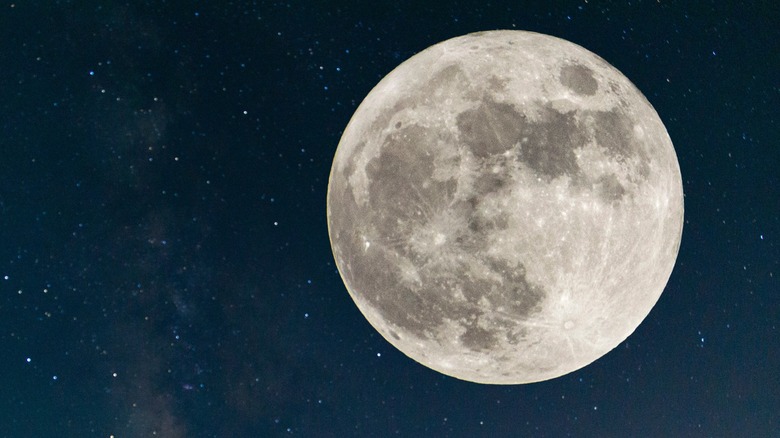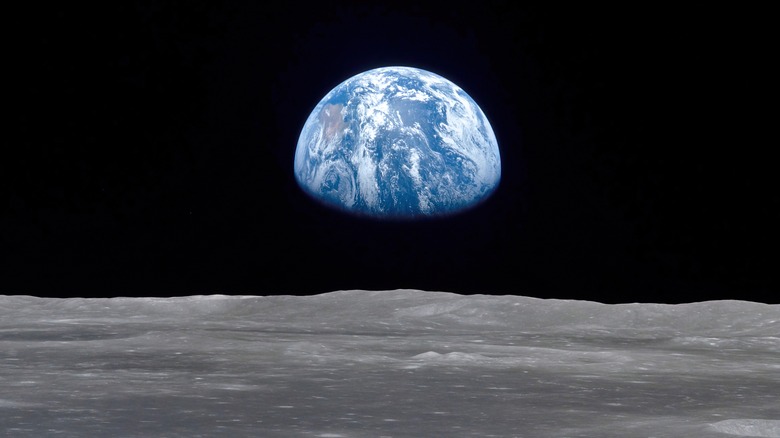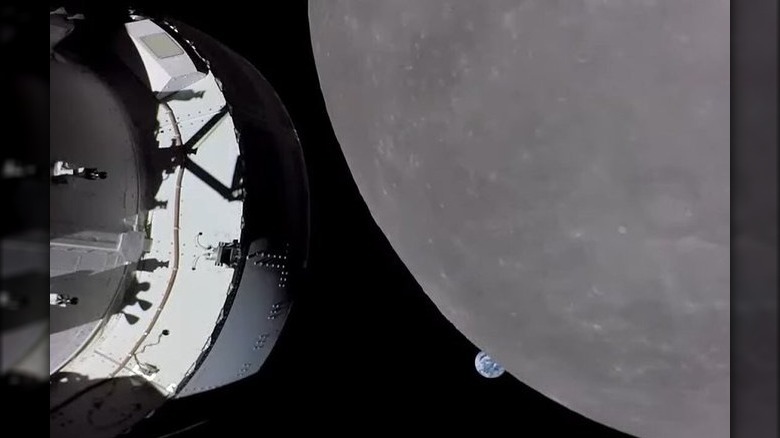Artemis I Photo Pays Tribute To One Of The Greatest NASA Images Ever Taken
With the peril facing the planet at the moment, it's easy to become entirely absorbed with it all. Per Forbes, the Wake Forest University's Dr. Nathaniel Ivers put it this way: "Negativity is contagious and unsatisfying ... we tend to want to read more, which can lead to the phenomenon of doomscrolling."
The last thing anyone wants is to get sucked into that, after all. Outside and away from our little cosmic speck, there's a huge impossibility of other marvelous things to consider. As Universe Today reports, Jupiter is a tremendous size: Its area is equal to that of 121.9 planet Earths. That staggering fact alone is enough, without even getting into the endless stretches of space beyond.
As with the depths of the oceans, we only know as much as we do about these mysterious reaches because of the innovative work of scientists. The world's keenest minds have worked for centuries to expand our knowledge of our celestial neighbours. And far beyond. Along the way, NASA and similar organizations have treated us to some remarkable images humanity may never have seen.
First came the Earthrise
Seeing the Earth from space, needless to say, is a remarkable and unique privilege. It's the stuff that children dream of becoming astronauts for, and that those who manage it continue to speak of. In the 2013 documentary "Overview," per Science News, several privileged spacefarers in such a position said just that. As astronaut Ron Garan put it, "When we look down at the Earth from space, we see this amazing, indescribably beautiful planet ... Anybody else who's ever gone to space says the same thing because it really is striking."
What of the vast, vast majority of us who don't achieve our childhood dreams to travel into space? Well, fortunately, those who do have been able to set up a range of nifty technology over the years. Thanks to such efforts, we can enjoy the next best thing: remarkable photographs of the Earth and the great expanse it inhabits.
The Hubble Space Telescope has captured countless extraordinary images. Drones sent to the distant corners of the Solar System have done the same. Some of the most astonishing ever seen, though, were those captured by awe-struck astronauts themselves.
The legendary Earthrise image seen here, per NASA, was captured by the astronauts of Apollo 8, which began orbiting the moon in December of 1968. In sharing their extraordinary view with the world, they made us all part of something far, far larger than ourselves. Decades later, Artemis I captured the equally-stunning inverse of this image.
And then the Earthset
Artemis I, NASA reports, is a first step in what may be the organization's most ambitious project ever. Its ultimate aim is nothing less than to "enable human exploration to the Moon and Mars." There are, needless to say, umpteen steps in between before we're all strolling along the surface of the Red Planet like Matt Damon.
The spacecraft was launched on November 16, per LiveScience. The Orion, unmanned for this mission (astronauts are set to take off aboard Artemis II, NASA reports), is to travel to the Moon and back safely, not landing but making the journey. In the process, it had the opportunity to capture this wondrous image. In a November 21, 2022 tweet, NASA's official Twitter account called it "Earthset," noting that Orion "captured this shot of Earth "setting" while the spacecraft passed close to the Moon.
We often consider the Moon to be an outrageous distance away, and ... well, it is. In the Tweet, NASA stated that Orion was already "Nearly 270,000 miles (430,000 km) away" when it took that shot. Nonetheless, this isn't really very much at all in space terms. Perhaps, in the not-too-distant future, we really will be able to see sights like these from space for ourselves.


